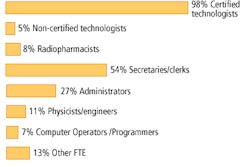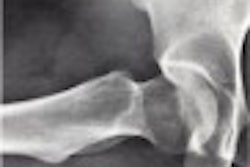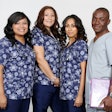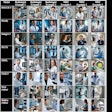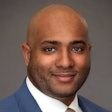It may come as no surprise, but the latest published study of morbidity among x-ray technologists has found that they suffer high rates of musculoskeletal injury attributable to their work.
While relatively few occupational medicine studies have focused on x-ray technologists -- just five previous publications were found by the researchers -- all of the studies have found an increased risk of musculoskeletal injury for those working in the field.
In the latest study, Canadian researchers sought to determine the "musculoskeletal morbidity profile" of x-ray technologists through interviews with 20 randomly selected techs from two large university hospitals in Edmonton and Calgary (International Journal of Industrial Ergonomics, January 2004, Vol. 33:1, pp. 29-40).
The researchers compiled a list of 25 tasks performed by technologists, all of which were deemed by some portion of the interviewees as stressful for the back or upper extremities.
"The tasks which were not stressful for the back were stressful for the upper extremity, and the reverse was true as well. Thus, there were no tasks which were not stressful," wrote the authors, led by Shrawan Kumar, Ph.D., a professor of physical therapy at the University of Alberta.
Among the tasks deemed most stressful for the back: manually lifting patients from wheelchairs, transferring patients using spine boards, and repositioning cassettes under patients. Most stressful for the upper extremities were carrying cassettes in one hand, loading and unloading multiloaders, and repositioning cassettes.
Emergency room, general radiography, and mobile radiography shifts were ranked as harder on the back and upper extremities than fluoroscopy, operating room, or outpatient assignments.
The technologists interviewed ranged in age from 21 and 58 years, and 89% were physically active. "One would normally expect young people leading physically and recreationally active lifestyles to be healthy and free from morbidity," the authors noted.
"However, 83% of the female sample suffered from back pain," they wrote. "Two of the subjects had had four episodes of back pain, another three had three episodes, nine more had two episodes and the last three had their first episode." A majority of the technologists at both hospitals were female: 76% at one facility and 69% at the other.
The reported incidence and recurrence of back pain is unusually high among workers and indicates occupational risk factors, the authors stated. Another indicator of physical stress was the high turnover among techs and the absence of techs over 60 at either hospital. At one facility more than a third of the sample was under 30 with fewer than five years of experience.
The latest findings also line up with those from earlier studies of x-ray technologists. A 1994 report found the incidence of lower back pain was 34% among radiographers aged 30-39 and 50% among those aged 40-49, compared to only 20% among clerical staff aged 50-59.
The only quantitative assessment of biomechanical load on x-ray technologists was published in 2003, also by Kumar and co-authors. It found that repositioning patients horizontally and lifting them from wheelchairs caused lumbosacral compression of 7,936 and 8,335 Newtons, respectively (The Newton unit of force equals mass times acceleration due to gravity).
The technologists’ lifting tasks substantially exceed the 6,700-Newton maximum set by the U.S. National Institute for Occupational Safety and Health (NIOSH), the authors noted. Earlier studies found that many people suffer spinal failure at that maximum level.
By comparison, 99% of men and 75% of women age 60 or younger can handle a compression force of 3,400 Newtons, which occurs when lifting around 25 kg close to the body or 10 kg at arms’ length, Kumar said in an interview with AuntMinnie.com.
While researchers cannot ethically conduct studies that would prove such excess lifting and other tasks result in the excess injuries experienced by technologists, the authors wrote, "it is arguable that the occupational loads are likely causally associated with the morbidity observed."
"What we really need to do is modify those jobs to bring them well within the safe limit of performance," Kumar said. He plans to do further research to come up with recommendations that reduce the occupational risks for x-ray technologists while maintaining their productivity.
By Tracie L. ThompsonAuntMinnie.com staff writer
February 11, 2004
Related Reading
A day in the life of a radiology practitioner assistant, October 24, 2003
RTs are already tackling advanced tasks, survey says, August 15 2003
ASRT opposed to changes in overtime rules, July 21, 2003
Senate introduces RT credentialing bill, June 9, 2003
Survey reveals pay and perks for radiologic technologists, May 29, 2003
Copyright © 2004 AuntMinnie.com





